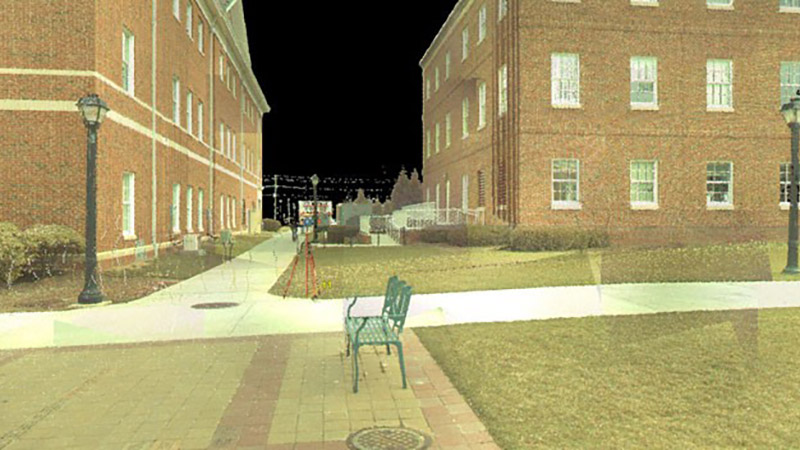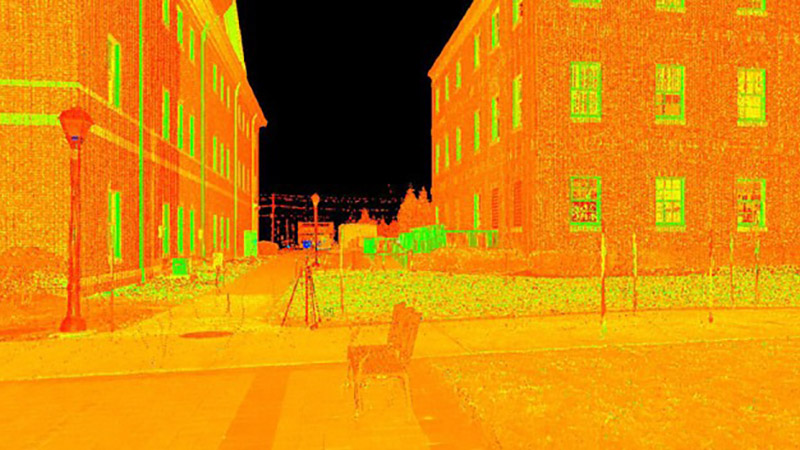Radford University
Projects
The GIS Center, Geospatial Science Dept., and Geography Club Host National GIS Day Event
Radford University students met at the Bonnie Hurlburt Center for an OpenStreetMap event to promote National GIS Day. Student used mobile devices to crowdsource map data on the GIS Cloud platform. People received a brief introduction to GPS and mobile data collection, and then went around campus and the surrounding area to map and collect geospatial data. The data was posted real-time so that people could visualize the geospatial data gathering process. We hope to use the data to build a more complete map of the Radford University campus and surrounding area. A total of 357 features and pictures ranging from handicap access ramps to street light were collected in 2 hours. View raw map results.
Harnessing GIS Technology for Food System Development and Enhancing Food Access in Appalachian Virginia
By: Jennifer Lamb, Fellow, Appalachian Sustainable Development
This work was funded through the United States Department of Agriculture Risk Management Agency.
In September 2012, Appalachian Sustainable Development (ASD) teamed up with Dr. Andrew Foy of Radford University to use the power of GIS (Geographic Information System) technology to strengthen ASD’s food system and food access work in southwest Virginia and northeast Tennessee.
Sustainable Agriculture
ASD’s largest and longest standing program (since 2001) in sustainable agriculture is the Appalachian Harvest (AH) network. Based in Duffield, VA AH aggregates conventional and organic produce from local growers and sells over 1.3 million dollars in product to wholesale buyers and grocers stretching from Atlanta to Philadelphia. The GIS aims to improve operations at AH through recording current and past farmers participating in AH, buyers, and distribution routes and has been used to identify potential opportunities to engage new growers and regional food hubs (Figure 1).
In summer 2013, the ASD GIS played a critical part in the launch of a new social enterprise, the Rooted in Appalachia restaurant delivery service. Paired with a local promotional campaign to celebrate and incentivize purchasing local food, the restaurant delivery service aggregates produce, value added, and meat products from local growers for sale to restaurants in Abingdon and Bristol with plans to expand into Johnson City and Kingsport, TN. Every week, ASD staff use the GIS to calculate optimal distribution routes to pick up produce for delivery.
The annual production of the ASD Local Food Guide also expanded due to the ASD GIS. Through online surveys, ASD collected data from farmers, grower associations, restaurants, farmers markets and meat processing facilities. The public version of the GIS, an online Interactive Local Food Guide, makes this data and some innovative tools available to producers and consumers. Explore the interactive guide and tutorials for getting directions, locating local food opportunities near you, and identifying your nearest local food restaurants, meat processing facilities, and farmers markets.
Food Access
An equally critical component of the ASD GIS work has been to examine the relationship between sustainable agriculture programming and ASD efforts to increase food access regionally. Currently, the Healthy Families ~ Family Farms program of ASD fundraises to purchase seconds from AH growers to be donated to food pantries. A partnership with Feeding America Southwest Virginia’s Mobile Food Pantry allows AH produce to reach even more families in need. Most recently, ASD has added Earthboxes (raised gardens on legs with casters for people with mobility and/or space limitations) and Grow Your Own gardens (garden plots designed to feed and educate local low income residents and their neighbors) about the benefits of growing their own produce. Figure 3 overlays the reach of ASD’s food access programming with median household income to demonstrate the critical need areas served.
Collaborating with the Appalachian Foodshed Project
ASD is currently strategizing how to expand our food access and sustainable agriculture work to serve high needs communities in Appalachian Virginia and Tennessee. GIS technology is critical to help visualize the challenge of serving remote and rural areas. Figure 4 is an example of the reality of working in mining communities. This large mine is in direct proximity to a Mobile Food Pantry stop where ASD worked with youth to grow their own sunflowers (Figure 5). ASD looks forward to continued partnership with the AFP to include data synthesized by the AFP to strengthen the data component of the GIS and to help target programs to better serve the region.
For more information about ASD, email asd@asdevelop.org.
Launched Supply and Demand Interactive Web-based GIS for Supply and Demand Analysis of Rural Appalachian Agricultural Products for the Appalachian Sustainable Development Organization:
Most recently, the Radford University GIS Center provided ASD with a prototype webGIS application. It is an interactive web map of ASD current suppliers and demand partners, which allows a user to locate and analyze service areas, compute different combinations of distribution routes, or look at the socio demographic data for an area. The GIS Center is seeking new grant opportunities to provide ASD with training on the best way to utilize this tool, store data, and further develop the application.
Radford University Terrestrial Laser Scan
In spring 2012 the Geospatial Science Department and GIS Center collaborated on a course focused on teaching undergraduate students surveying techniques and LIDAR basics. The class project was to scan as much of campus as possible and create a 3D tour and video of campus. One third of the campus was completed that semester.
The results of the project were presented in April at the USA Science & Engineering Festival in Washington, D.C.


